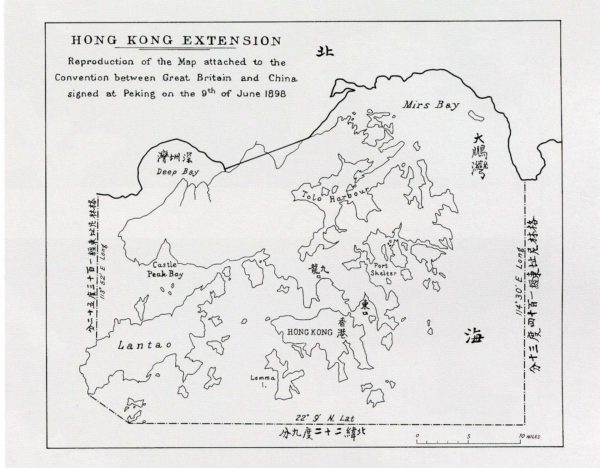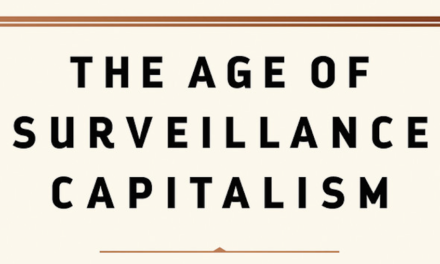Di JON SOLOMON.
If the debates incited by the 2019 Hong Kong Protest Movement, known as the Anti-Extradition Law Amendment Bill (or Anti-ELAB) Movement, have revolved around conflicting interpretations that favor differently weighted readings of geopolitics and more fundamental questions about the extent to which geopolitics can serve as a reliable index for understanding local insurrection, the bulk of commentary, which we have attempted to follow as closely as possible in Chinese, English, and French, seems to us almost unified, despite the important differences, in its inability to help us situate not just the Movement, but the entirety of our global conjuncture in terms of a particularly problematic relation to bordering.
For those “outside” of Hong Kong – a qualification whose problematic nature goes to the heart of some of the fundamental mystifications to which both the protest movement itself and accounts of it from all sides regularly contribute – the crucial political question concerns “support.” For many, the question of support often boils down to a carefully curated application of mathematical averaging. The formula varies but the result is the same: unseemly rightwing phenomenon such as colonial nostalgia, alt-right memes, anti-immigrant racism, and ethnicized boycotts are reduced to the statistically insignificant while a carefully-crafted image of solidarity (“the HK left is basically unanimous in its support for the movement”) covers up the elephant in the room.
The period covering roughly a decade-and-a-half from the movement to preserve Star Ferry Pier (2006) and the anti-High Speed Rail Movement (2009), through Occupy Central (2011) to the Umbrella Movement (2014) and its aftermath, was filled with debates about a change in political direction for the left, as “progressives” progressively struggled to embrace or reject discourses around identity, self-determination, migration, freedom, and historical memory. This is a political sequence that concluded in the wholesale discrediting of the left by Hong Kong society at-large, seen for instance in the popularization of the epithet zogauu (commonly translated as “leftard”), accompanied by important reversals in position among the diverse strands of the anti-CCP Hong Kong left. The metaphor of an elephant in the room hardly conveys the reality of a palimpsestic situation that would be better described as the wholesale demolition and rebuilding of “the room” designed to normalize the infrastructural presence of an “elephant” veering further and further to the right.
Nothing is more emblematic of this shift than the gradual acceptance of articulating political composition to the defense of Hong Kong’s many borders with the rest of China. Hence, our analysis does not see the Hong Kong left as a “lost cause.” Rather, it begins, from a critical appraisal of the collective embrace of a return to borders as a solution to the political defeat of the previous sequence. While our emphasis on the defeat of the left prior to the 2019 anti-ELAB movement might seem to repeat Razmig Keucheyan’s recent autopsy in Left Hemisphere: Mapping Critical Theory Today (2013), there is a crucial difference. Never delivering on its promises for a new global cartography, Keucheyan’s analysis relies instead on the old cartography of areas inherited from the colonial—imperial modernity while adopting a fashionably more “inclusive” perspective. The cartography that we have in mind begins with a radical questioning of the acts of bordering that create the areas, such as civilizations and nation-states, that today seem utterly natural and assist, via such naturalization, the reproduction of abstract labor without which capitalist regimes of accumulation cannot survive.
It is something of a truism that the best place to see bordering practice in action lies in the modern regime of translation.1 Here, the anti-ELAB Movement is no exception. The slogan “Stand with Hong Kong and Fight for Freedom!” (alternately, “Stand with Hong Kong, Power to the People!”) now disseminated globally by the Imperial Spectacle Corporation, originally began, like virtually all of the slogans used by the Movement, in an apparatus of translation. The Chinese phrase that originally accompanied this English slogan when it first appeared in mid-August, 2019, was “An Alliance of the U.S., the U.K., and Hong Kong; Sovereignty Resides in the People!” (jing mei gong mang zyu kyun zoi min). The asymmetry between the two slogans turns on an implicit equivalence between sovereignty and freedom. The mediation of translation the visibility of which is asymmetrically distributed between a local and diasporic population that is largely bilingual and a white settler colonial one that is not calls attention to the palimpsestic origin of this asymmetrical equivalence in a colonial ideology of anthropological difference. At the heart of that ideology lies an irresolvable contradiction between the history of difference and the essence of origin.
Similarly, the slogan, gwong fuk heung gong, si doi gak ming, adopted from the secessionist Edward Leung, also plays heavily on differentially nuanced translation. Generally (mis)translated into English as “Liberate Hong Kong, Revolution of Our Time,” the Chinese slogan makes no mention of liberation. The term gwong fuk, to restore light, denotes not liberation but a recovery of lost sovereignty. It is, for example, the term that was used to describe the return of Taiwan to the Republic of China at the end of Japanese colonial annexation. While Hong Kong groups that advocate either a return to British sovereignty, by force if necessary, or an armed “liberation” of the city by U.S. military forces are certainly marginal, the notion of restoration is not. Neither is the implicit notion of sovereignty that underlies hazy demands for “self-determination” that have become part of the political horizon in Hong Kong during the same period. “To restore Hong Kong’s Former Sovereignty is Our Generation’s Revolution” might be a more accurate rendition, but still would not communicate the affective charge born by the Chinese phrase. It is a valence that makes the generalized return to borders sound paradoxically progressive – like enunciating a Trumpian call for walls in an Obama-esque tone. Imagine if “Make Hong Kong Great Again, the Tea Party of Our Generation” could be said with the alluringly inclusive, yet ultimately false, optimism of Barack Obama’s “Yes We Can!”.
The two translational situations described above together reveal a conjunctural constellation composed of three elements: a) the mediation of the relation between sovereignty and freedom by the bordering practice of translation, b) the historical defeat of the left, and c) a return to borders. No example is more emblematic of this constellation in a Hong Kong context than an interview Emily Wong, who goes by the pen name Ng Soeng, conducted with Yeung Tin Shui, a young Hong Kong artist and writer living in Tokyo who translated the Chinese language edition of Chantal Mouffe’s For a Left Populism (2018) that appeared in Hong Kong bookstores in October 2019. Needless to say, Mouffe’s work more than any other on the Left today has been most closely associated with the drawing of a “political frontier” during an era characterized by the concomitant defeat of the left and the proliferation and mutation of borders of every kind. It is within this context that we should listen to their dialogue, as narrated by Wong:
As it happened, the response to [Yeung’s] translation has been pretty good. So good, in fact, the level of enthusiastic response on the streets could have led one mistakenly to believe that leftist discourse had fermented in Hong Kong long enough to become downright well-established. A moment of deeper thought, however, would be enough to convince you that this enthusiasm reflected only the hopeless situation of leftist discourse in Hong Kong. The reality is that for the past ten years, “the left” has not had it easy in Hong Kong … “If you talk about the ‘left’ now, who knows what it means? The definition is totally vague. Even those ‘leftists’ who used to be afraid of identity politics now chant ‘Hongkongers add oil!’ and nobody asks anymore, ‘what about the new immigrants?’” … So, how much populism does Hong Kong need? According to Yeung Tin Shui, one should not set any limits to the development of populism in Hong Kong. “If you quote me saying that,” Yeung began asking himself with an air of resignation, as if something had just occurred to him, “won’t that seem really heavy?” Abruptly abandoning any concerns he might have had, he exclaimed, “I feel that whatever level of hatred Hongkongers have for the regime is the perfect level of hatred to have.”
In the face of differentially-translated appeals directed across the border to “Stand with Hong Kong and Fight for Freedom!” that accompany uniformly untranslated and unreported appeals directed inside the border to participate in an ethnicized anti-Chinese boycott inspired by Public Choice theory called the “Yellow Economy,” the mediations and bordering practices that enable the possibility of taking a stand in a postcolonial world divided by national sovereignty, commodity exchange, and a panoply of social differences beginning with linguistic difference seem to have receded into the background. Instead, calls to support Hong Kong, invariably framed within the economy of attention and viral affect, regularly divert our gaze away from the practices of mediation and bordering essential to the regime of anthropological difference that underwrote the settler colonialism that created Hong Kong and that continue to enjoy an afterlife encrypted in expert disciplines devoted to an anthropologically-defined area, such as international China studies. In short, instead of mediation, we are invited to focus on identification, to play once again the role of a supplier of recognition and a source of normative standards which essentially defines the fantasy of the West.
The Movement with which we are asked to identify and for which we are asked to provide recognition is based on a palimpsestic invention. The idea that Hong Kong today finds itself in a “subaltern” position vis-à-vis China, undergoing a second colonization more violent than the first, erases the memory of the local population’s transferential relationship to settler colonialism that culminated in the “northbound colonialism” of the 1990s exercised in China by Hong Kong-based capitalists, managers, and professionals. The historical experience of settler colonialism in Hong Kong was not limited, it bears repeating, to the white British population; it extended to include not only other migrant populations from the Empire, such as South Asians whose descendants still form an important part of the HKSAR, but also the “local Chinese” population as well. Perhaps the most important revision of the notion of “colonial collaboration” and the critique of “northbound colonialism” developed by Law Wing Sang’s now classic work, Collaborative Colonialism: The Making of the Hong Kong Chinese (2009), comes indirectly from Siu Keung Cheung’s Controlling the New Territories: Land Tenure, Patriarchy and Sovereignty (2016), the Chinese language revised edition of work first published under a different title in English in 2007. Refuting the time-honored Sinological shibboleth that characterized the New Territories in Hong Kong as the archetype of a traditional Chinese society anchored to the land and unchanged by colonialism, Cheung effectively demonstrated that the “local indigenous” population was a colonial invention. Crucially, this invention combined an epistemological aspect of knowledge production with a juridical aspect of internalized borders. In effect, “indigeneity” became a governmental technology of population management via combined epistemic and legal borders whose effect, whether by expedience or design, could turn refugee, migrant, and diasporic populations into settlers. Hong Kong Chinese were not simply the objects of settler colonialism but also became its agents. Not collaborative colonialism, but complicitous settler colonialism.
Nothing is more emblematic of this complicity than the demonstration held in Hong Kong on Thanksgiving Day 2019 to give “thanks” for the two Hong Kong-related bills signed into law that day by Donald Trump. On a date redolent of the symbolism of white settler colonialism (WSC), tens of thousands of people in Hong Kong, another settler colonial state, assembled at Edinburgh Place, Central, Hong Kong, for a demonstration at which US flags and “Swole Trump” posters were more numerous than anywhere else save a Donald Trump campaign event. Even mathematical averaging cannot make this complicity disappear; only the erasure of settler colonialism’s historical mediation of the relationship between sovereignty and freedom via a carefully curated regime of translation could achieve that effect.
Paradoxically, the idea of “non-sovereignty” and border politics can be used to reinforce the bordering practices that sustain the colonial—imperial cartography of the capitalist world. This paradox was on display at a conference held at the City University of New York Graduate Center on December 5, 2019, titled “Non-Sovereign Revolutions?” at which one of the invited speakers, Jun Pang, a research fellow at Global Detention Project, Geneva, claimed that the 2019 anti-ELAB Movement represents a liberation from the “ossified categories of nation-state sovereignty” used by Hong Kong’s “new colonial masters.” The oft-repeated idea that the Sino-British Joint Declaration of 1984 and the Basic Law enacted in 1997 were designed to guarantee Hong Kong’s institutional autonomy erases the fact that both of these documents relating to Hong Kong’s postcolonial status arose in the context of a political process of retrocession subsequent to a long history of colonial trauma accompanied by increasing great power weaponization of borders, diaspora, and finance. To remember such “details” is not to naturalize the putative normativity of Chinese national sovereignty but rather to call attention to the way in which practices of palimpsestic identification that form the basis of the places on which we stand are premised on the hidden presupposition of the normative sovereignty and unity of the West. In response to the tweet from Wilfred Chan, a journalist of the Hong Kong diaspora living in New York, on August 25, 2019, calling on followers to “destroy the myth that china must only be a unified, mandarin-speaking han ethnostate,” we would reply: the “Chinese ethnostate myth” that he and others want to “destroy” does not occur in isolation but is integrally related to the fantasy of the unity of the West, without which it could not possibly constitute itself as such. This is not a universalist critique of ethnocentrism but a recognition that the nature of the areas (nation-states and civilizational blocs) characteristic of colonial—imperial modernity is fundamentally relational. To seek to “destroy” the Chinese ethnostate without having “destroyed” that abstract social relation known as “the West” at the same time – if not first – can only result in a consolidation of the fantasy of the West, rendering border practices invisible to those on both sides of the border.
Is it necessary to remind readers that the West can hardly be understood as a fixed geographical region or determinate geocultural entity given the extent to which its boundaries have moved radically over the past century? As the template of area in colonial—imperial modernity, the West names not a place but an abstract form of relationship, in much the same way that capital names not a thing but a social relationship. The “things” or “identities” party to that relationship may change but the continuum of difference along which they are charted is perpetually reinforced by each new appeal to a border. To understand bordering practice is to understand how the act of drawing, or reproducing, a border creates, or reproduces, the things apparently separated by it. In other words, to study the act of bordering, as opposed to borders, is to perceive the gradient of differentiation polarized by “things” or “identities.” Bipolar identities such as China and the West (into which Hong Kong can be inserted in variable permutations) exist only by virtue of the bordering practices that institute them into a continuum. To commandeer a term from the vocabulary developed by Ricardo Sanín Restrepo, the bordering practices that create the continuum operate like a form of encryption, in which the “things” created by the act of bordering are coded into a system of pre-programmed difference.
Encryption understood this way is a form of enclosure into difference. The differential gradient that organizes the relationship cannot be effectively opposed from any point along the gradient, since the relation between the terms that compose it is circular and mutually reinforcing. To put it in the conceptual framework proposed in X—the problem of the negro as a problem for thought (2015) by Nahum Chandler, a contemporary philosopher of the black radical tradition, we seem to have forgotten that sovereignty needs to be understood fundamentally in relation to slavery, not freedom. From this perspective, slavery names not the symmetrical opposite of freedom but the asymmetry of a double bind from which the only possible escape is not the normativity of “freedom” but the rejection altogether of normative political subjectivity configured through a gradient between opposing poles. Sovereignty and freedom only look equivalent when seen from the chimerical perspective of settler colonialism. To study the act of bordering in light of not the sovereignty of freedom but the double bind of slavery is to remember that the relational gradient between these intrinsically related polarities only appears symmetrical when we forget how the “freedom” of “unity in diversity” (E pluribus unum) was first created by WSC in relation to its “outside.”
As we enter an historical period characterized by the weaponization of both borders and the asymmetrical flows of language, bodies, and affects that cross them, it becomes increasingly urgent to develop a political critique of the mediations or bordering practices that performatively create and reproduce the “things” supposedly divided by the border. If the Hong Kong movement “reflects massive structural shifts” occurring at a global level, it is no less true that the meaning and breadth of such shifts is no less explained by the appeal to “an expansion of human freedom” than by the realpolitik of great power competition. To be sure, ours is an era haunted by urgently needed massive transitions of all kinds, not just in the realm of geopolitics. Yet, against those who depict the core issue at stake in the Hong Kong protest movement as a frontline battle zone against authoritarianism, surveillance capitalism or digital dictatorship, we contend that it must be seen as a new type of battle in which the “frontline,” the border itself, is the key issue. In other words, the anti-ELAB movement represents a paradoxically insurrectional mystification of the enclosures inherited from the colonial—imperial modernity.
While the roots of the identificatory practices through which those “outside” Hong Kong are today invited to rejoin their homologues “in” Hong Kong protesting China’s various “border violations” lie in the biopolitical apparatus of area and anthropological difference inherited from the colonial—imperial modernity, the mystificatory potential of such practices extends far into the future. Faced with the collapse of the biosphere in Colonialism 2.0 and the emergence of what Franco Berardi recently called an “Automaton” that is “turning the future into a forced replication of the present,” we must ask whether today’s battles for the border are not becoming one of the key ways that the colony—imperial cartography of the present replicates itself? What do we stand to gain, or to lose, by a return to the border in the context of a romantic aesthetics of human freedom? Can we afford to forget the historical precedent from the previous version, Colonialism 1.0, of a dialectic between the 19th century Yellow Peril image of Chinese as an essentially shiftless, shapeless, inscrutable people motivated by an insatiable will to power and the fantasy of the West as a geocultural unity where the essence of humanity is realized, despite all the imperfections, more fully than in any other place? Can we afford to ignore, in other words, that the dialectical opposition between the anthropological type and the freedom of the human subject that characterizes the modern aesthetic ideology – an ideology inscribed, as Simon Gikandi writes in Slavery and the Culture of Taste (2011), on the palimpsestic ledger of slavery – has now been displaced to the proliferation of borders paradoxically devoted to the defense of freedom?
If the Hong Kong movement is globally important, it is not because of its value as a privileged site in which to reactivate both the modern aesthetic ideology and our faith in WSC’s “fight for freedom,” but rather because it is, more than any other struggle of the moment, explicitly, and in ways that are deeply problematic, dialed in around the crisis of bordering practices. To take a stand for freedom without understanding the bordering practices through which one’s stance, or positionality, is mediated is a sure sign of the desire for a return to borders, if not for their proliferation. This desire can lead nowhere but to a future dialectically bound, by virtue of its pursuit of an essentially speciestic “freedom,” to an unprecedented enslavement to the increasingly militarized Automaton looming on the horizon that locks us into the enclosures or areas necessary for the reproduction of capitalist social relations.
Questo articolo è stato pubblicato in Critical Legal Thinking il 14 gennaio 2020.

















